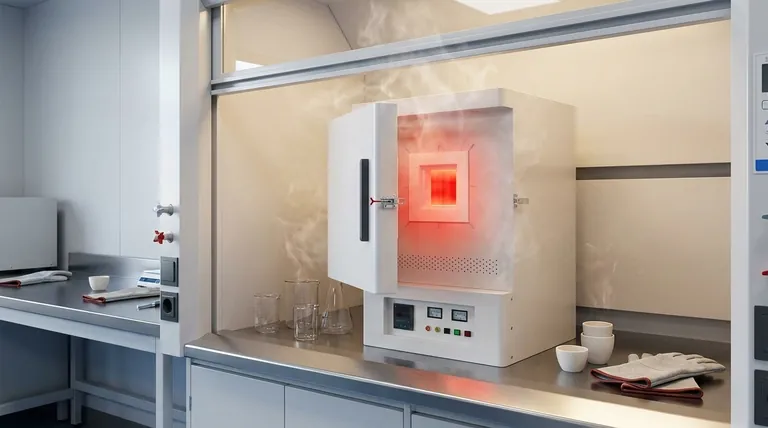While pyrolytic ovens offer remarkable self-cleaning convenience, they come with notable disadvantages you must consider. The primary drawbacks are a higher initial purchase price, significant energy consumption during the cleaning cycle, and the production of smoke and strong odors that require proper ventilation.
The core trade-off of a pyrolytic oven is clear: you are paying a premium—in upfront cost, energy usage, and operational diligence—for the automated convenience of not having to manually scrub baked-on grease and food residue.

The Financial & Energy Costs
The most immediate disadvantages of a pyrolytic oven are its impact on your budget, both at the time of purchase and over the life of the appliance.
Higher Initial Purchase Price
Pyrolytic ovens are consistently more expensive than their non-pyrolytic counterparts. This price difference is due to the advanced technology required for the feature to operate safely.
This includes thicker, more robust insulation to handle extreme heat, a sophisticated automatic door locking mechanism that engages during the cycle, and more durable interior enamel built to withstand thermal stress.
Increased Energy Consumption
The self-cleaning process, known as pyrolysis, works by heating the oven to extremely high temperatures, typically around 500°C (930°F).
Reaching and maintaining this temperature for two to four hours consumes a substantial amount of electricity. This makes the cleaning cycle an energy-intensive operation that will be reflected in your utility bills.
Operational & Safety Concerns
Beyond the cost, the day-to-day reality of using the pyrolytic function involves considerations for your home environment and safety.
Intense Heat and Smoke Production
The pyrolytic cycle literally incinerates food residue, turning grease and spills into a fine carbon ash. This process inevitably creates smoke and strong, often unpleasant odors, especially if there is a heavy build-up of grime.
Proper ventilation is not optional; it is essential. You must run your kitchen's extractor fan and open windows during the cycle to maintain air quality.
Potential for Harmful Fumes
Burning food matter, particularly fats and sugars, can release chemical compounds into the air, including carbon monoxide, acrolein, and other volatile organic compounds (VOCs).
While a well-ventilated kitchen mitigates this risk for most people, these fumes can be particularly irritating to individuals with respiratory sensitivities and are known to be highly toxic to pet birds.
Safety Lock and External Heat
For safety, the oven door locks automatically and cannot be opened until the cycle is finished and the temperature has dropped to a safe level.
Despite the heavy insulation, the oven's exterior and the surrounding cabinetry can still become significantly hotter than during normal cooking. Caution is required, especially in homes with small children.
Understanding the Long-Term Trade-offs
The convenience of a pyrolytic oven is not without potential long-term consequences for the appliance itself.
Wear and Tear on Components
Exposing the oven to temperatures of 500°C places extreme stress on its components. This includes the heating elements, electronic controls, and even the interior enamel finish.
Over time, frequent use of the high-heat cycle can potentially shorten the lifespan of the appliance or lead to a higher likelihood of repairs compared to a standard oven.
Pre-Cleaning is Still Required
The self-cleaning function is not a completely hands-off process. You must first remove all oven racks and accessories, as the extreme heat can damage them.
You also need to wipe out any large food spills or pools of grease before starting the cycle. Failure to do so can lead to excessive smoke and even pose a fire risk.
Making the Right Choice for Your Needs
To decide if a pyrolytic oven is right for you, weigh its undeniable convenience against these practical disadvantages.
- If your primary focus is ultimate convenience: The ability to avoid harsh chemicals and manual scrubbing may be worth the higher cost and energy use, provided you have excellent kitchen ventilation.
- If your primary focus is budget and energy efficiency: A standard oven or one with a lower-temperature cleaning aid (like catalytic liners or steam cleaning) is a more economical choice.
- If you have respiratory sensitivities or keep pet birds: The risk posed by fumes during the cleaning cycle is a serious concern, and a non-pyrolytic model is the safer option.
Ultimately, a pyrolytic oven exchanges money and energy for time and effort, and understanding this trade-off is the key to making an informed decision.
Summary Table:
| Disadvantage Category | Key Concerns |
|---|---|
| Financial & Energy | Higher initial purchase price, increased energy consumption during cleaning cycles |
| Operational & Safety | Smoke and strong odors, potential for harmful fumes, external heat, automatic safety lock |
| Long-Term Trade-offs | Wear and tear on components, pre-cleaning of racks and large spills still required |
Upgrade Your Lab's Capabilities with KINTEK
While pyrolytic ovens present challenges for home kitchens, KINTEK's advanced laboratory ovens are engineered for precision, safety, and efficiency. We serve laboratories that demand reliable, high-performance equipment for critical processes.
Our range of lab ovens offers superior temperature control, robust construction, and safety features tailored to your research and testing needs. Let KINTEK be your trusted partner in equipping your lab for success.
Contact our experts today to find the perfect oven solution for your laboratory.
Visual Guide

Related Products
- 1200℃ Muffle Furnace Oven for Laboratory
- Electric Rotary Kiln Pyrolysis Furnace Plant Machine Calciner Small Rotary Kiln Rotating Furnace
- Graphite Vacuum Furnace Bottom Discharge Graphitization Furnace for Carbon Materials
- Large Vertical Graphite Vacuum Graphitization Furnace
- Vacuum Heat Treat and Pressure Sintering Furnace for High Temperature Applications
People Also Ask
- What is the purpose of sintering in powder metallurgy? Transform Powder into High-Strength Parts
- What is ashing in chemistry? Enhance Analytical Accuracy with Ashing Techniques
- What is the process of sintering in ceramic materials? A Guide to Transforming Powder into High-Strength Parts
- What crucible is used in muffle furnace? Select the Right Material for Your Application
- Why do ceramics need to be sintered? Unlock Strength and Durability Through High-Temperature Fusion



















